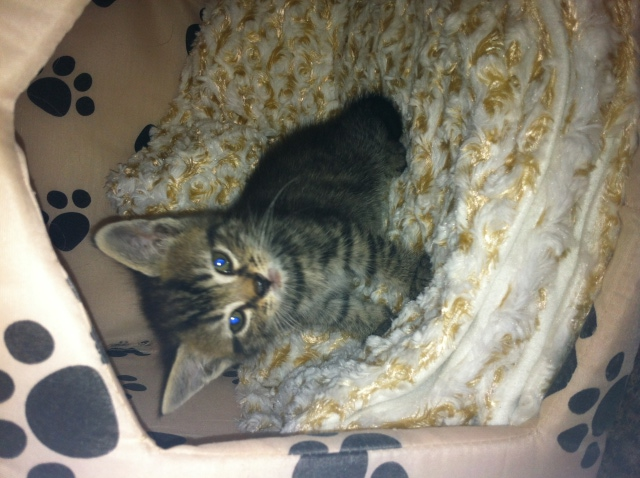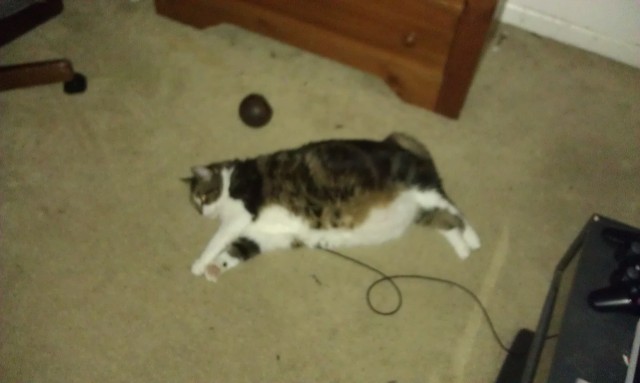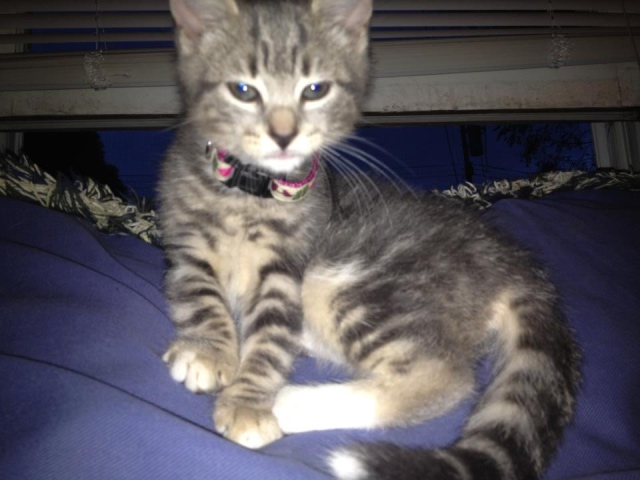Questioni have a calico adult cat that is scared of evrything due to rough life. she runs from everything. about a year or half a year ago, her ear swelled up a lot, then went down a little. and when it stopped going down, it was about 1 month after it swelled. anyways, up to this day, her ear is hard, bumpy and bent back, and when looking into it, you see black earwax everywhere in her ear. it's kind of hard to explain. but, if it gets touched, she shakes her head cause i guess it itches. i see her scratch it. but she moves it, but not as much as the normal ear. there is about 3 to 5 times as much earwax in the ear then what there should be. any ideas what it is?
Answer
Hi Sarah!
I'd say it's a 99% chance that your cat has ear mites.
Ear mites are tiny crab-like parasites. They are the most common cause of outer-ear inflammation in cats. They are very contagious between cats. If left untreated, ear mites can cause bacterial and yeast infections which can rupture the ear drum and cause deafness. PLUS they make a cat miserable.
Frequent ear scratching and head-shaking are the most common symptoms. When a mite-infested cat constantly scratches it's ear, it can tear open tiny blood vessels in the ear flap, which can lead to swelling (known as hematoma) and permanent disfigurement. Another symptom of a mite infestation is a buildup of dark wax that looks something like coffee grounds. Mites stimulate the wax-producing glands inside the ear and that buildup of wax can then cause inflammation.
You really should take the cat to the vet and have him treat the cat. He will first clean the cat's ears by flushing out the debris (which gets rid of a large number of mites). You can do it at home but it is not suggested because of the damage that could be done to the cat's ears.
After cleaning, the vet treats the mites with medication, usually in the form of drops, that not only kill the parasites but also prevent secondary infections and reduce inflammation. It's imperative to continue the course of treatment at home for at least a month (or as per your vet's instructions, depending on the medication) to cover the complete 3 week life cycle of the mite. If treatment is stopped too soon (because the cat stops scratching), developing mites will reach adulthood and multiply.
Other options:
There are topical medications available from Frontline and Revolution (to name a couple) that you put on their backs. Also, there are over the counter ear mite medications. My cats HATE them! I think it makes the mites go crazy when they are dying and makes the cat itch. A home remedy that is commonly used is olive oil.
For future reference here is a link to a website that has pictures that show you how to clean a cat's ears:
(copy and paste, or type into your address bar)
http://lbah.com/ear_cleaning.htm
In your case though, it sounds like she has a pretty bad case of them, so I would have the vet do it the first time. If she gets them again, they won't be so bad and you can probably 'nip them in the bud' at home.
Mine get them too. The cat (a calico? Yeah!) will feel SO much better after her ears are taken care of.
Carol

 blackened area under lower jaw
Question
Daisy
My Daisy is a 12 year old short-h
blackened area under lower jaw
Question
Daisy
My Daisy is a 12 year old short-h
 Bengal kitten?
Question
Pic Picture
Hello, I was wonderi
Bengal kitten?
Question
Pic Picture
Hello, I was wonderi
 what type of cat is mine?
Question
zella
Ok this cat is very big one of bi
what type of cat is mine?
Question
zella
Ok this cat is very big one of bi
 Trimming (crazy) Kittens Claws
Question
tigerlily
I need to trim my kittens nai
Trimming (crazy) Kittens Claws
Question
tigerlily
I need to trim my kittens nai
 Cant get cat to play
Question
Jules
My male cat Jules is 13. La
Cant get cat to play
Question
Jules
My male cat Jules is 13. La